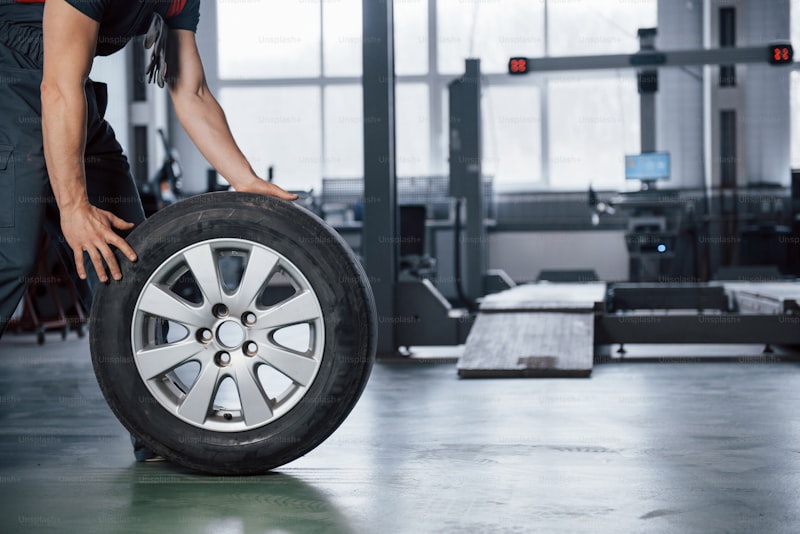Are you experiencing difficulties with your vehicle’s transfer case? Don’t worry, you’re not alone! Transfer case problems can be a real headache for off-road enthusiasts and everyday drivers alike. In this article, we’ll delve into the details of transfer case issues, from common symptoms to effective troubleshooting techniques. Buckle up and let’s dive in!
One telltale sign of transfer case trouble is strange noises emanating from underneath your vehicle. If you hear grinding, whining, or clunking sounds while shifting gears or engaging the 4WD mode, it’s a clear red flag. These noises could indicate worn-out gears, damaged chains, or even a faulty clutch.
Another symptom that should raise concern is difficulty shifting gears. If you find it increasingly challenging to move between drive modes or experience resistance when engaging the 4WD system, your transfer case might be at fault. This could be caused by a malfunctioning shift linkage, a worn-out shift fork, or low fluid levels.

Leaking fluid is another indicator of potential transfer case problems. A visual inspection under your vehicle can reveal fluid stains or puddles, signaling a leak. Low fluid levels can lead to inadequate lubrication, causing excessive friction and premature wear on vital components.
Now, let’s turn our attention to troubleshooting these issues. Start by checking the transfer case fluid level, ensuring it meets the manufacturer’s specifications. If the fluid is low, top it up with the recommended type and grade. Be mindful of any leaks, as addressing them promptly can save you from more significant problems down the road.

Next, inspect the shift linkage and make sure it’s properly adjusted. A misaligned or loose linkage can impede smooth gear shifting. Tightening and aligning the linkage may resolve the issue, but if the problem persists, it could be indicative of internal damage that requires professional attention.
If you’re comfortable getting your hands dirty, you can also inspect the transfer case for damaged or worn-out components. However, keep in mind that transfer case repairs can be complex and require specialized knowledge. When in doubt, it’s best to consult a qualified mechanic who can diagnose the problem accurately and provide appropriate solutions.
Transfer case problems can disrupt your driving experience and compromise the performance of your vehicle. By understanding the symptoms and implementing effective troubleshooting techniques, you can address these issues promptly. Remember, regular maintenance, including fluid checks and inspections, goes a long way in preventing transfer case problems and ensuring smooth operation on and off the road. Stay proactive, and enjoy a trouble-free driving experience!
Automotive Nightmare: Transfer Case Problems Plague Vehicle Owners Nationwide
Are you ready to hear a nightmare that haunts vehicle owners across the nation? Buckle up and get ready for a spine-chilling ride through the dark alleys of automotive nightmares. Today, we delve into the treacherous world of transfer case problems that are giving countless car owners sleepless nights.
Picture this: you’re cruising down the highway, enjoying the wind in your hair and the freedom of the open road. Suddenly, you feel a strange vibration, a disconcerting jolt. Your vehicle seems to be struggling, its performance compromised. What could be the cause? Well, my friend, it’s likely a transfer case problem rearing its ugly head.
The transfer case, a vital component found in all-wheel drive and four-wheel drive vehicles, is responsible for distributing power between the front and rear wheels. It ensures smooth transitions and optimal traction on different terrains. However, when this crucial part goes haywire, it can turn your dream ride into an absolute nightmare.
One common issue plaguing transfer cases is fluid leaks. Over time, seals can deteriorate, causing transmission fluid to escape. This not only leads to a loss of fluid but also exposes the internal components to excessive heat and friction. If left unchecked, this can result in irreversible damage and a hefty repair bill.
But wait, there’s more! Another devilish problem arises from worn-out gears within the transfer case. Just like the teeth of a gnarly monster, these gears can become worn down, leading to grinding noises, erratic shifting, and even complete failure. Imagine the horror of being stranded in the middle of nowhere with a malfunctioning transfer case!
So, what can you do to protect yourself from this automotive nightmare? Regular maintenance and inspections are key. Make sure to have your transfer case and its fluid checked as part of your routine service appointments. Additionally, be vigilant for any signs of trouble, such as fluid leaks, strange noises, or difficulty shifting gears.
Transfer case problems are a true horror story for vehicle owners nationwide. From fluid leaks to worn-out gears, these issues can wreak havoc on your ride and your wallet. Stay proactive, keep an eye out for warning signs, and don’t let this nightmare become your reality. Your car deserves a happy ending, so take care of that transfer case and enjoy the open road without fear.
Have you ever wondered what makes your vehicle shift effortlessly between two-wheel drive and four-wheel drive modes? The answer lies in a crucial component called the transfer case. However, recent times have witnessed a concerning surge in transfer case failures, leaving car owners perplexed and worried. Let’s dive into the details of this alarming trend and explore what it means for vehicle owners.
A transfer case is essentially a gearbox that distributes power from the transmission to both the front and rear axles of an all-wheel or four-wheel drive vehicle. It enables seamless transitions between different drive modes, providing enhanced traction and stability on various terrains. However, the reliability of these transfer cases has become a growing concern in the automotive industry.
One possible explanation for the rise in transfer case failures could be attributed to the increasing demand for SUVs and trucks. These vehicles often bear the brunt of off-road adventures and towing heavy loads, subjecting their transfer cases to extreme stress and strain. Over time, the constant wear and tear can take a toll on the components, leading to premature failures.
Furthermore, inadequate maintenance practices and neglecting fluid changes can exacerbate the problem. Like any other mechanical component, transfer cases require regular servicing and fluid replacements for optimal performance and longevity. Failure to adhere to these maintenance routines can result in accelerated wear and eventual failure of vital internal parts.
The financial implications of transfer case failures are another cause for concern. Repairing or replacing a faulty transfer case can be a costly endeavor, leaving vehicle owners burdened with hefty bills. Moreover, the inconvenience caused by unexpected breakdowns and prolonged repair times can disrupt daily routines and add frustration to the equation.
To mitigate the risks associated with transfer case failures, proactive measures are essential. Regular inspections, fluid changes, and following the manufacturer’s recommended service intervals can significantly extend the lifespan of these critical components. Additionally, it is crucial to drive responsibly and avoid subjecting the transfer case to unnecessary stress, particularly during off-road escapades.
The surging cases of transfer case failures are a matter of growing concern for vehicle owners. Understanding the causes behind these failures and taking preventive measures can help navigate this troubling issue. By prioritizing maintenance, responsible driving, and addressing potential issues early on, car owners can drive with confidence, ensuring their transfer case remains in optimal condition for years to come.
From Bad to Worse: Transfer Case Malfunctions Pose Safety Risks on the Road
Are you familiar with transfer cases? These essential components found in all-wheel drive (AWD) and four-wheel drive (4WD) vehicles play a crucial role in distributing power to all wheels. However, when transfer case malfunctions occur, the situation can quickly go from bad to worse, posing significant safety risks on the road. In this article, we’ll delve into the details of transfer case malfunctions and shed light on the potential dangers they present.
Imagine cruising down the highway, confident in your vehicle’s ability to handle any terrain or weather condition, thanks to its AWD or 4WD system. Suddenly, you notice strange noises coming from underneath your vehicle, accompanied by vibrations and difficulty in shifting gears. These could be warning signs of a transfer case malfunction, and ignoring them can lead to dire consequences.
One of the most common issues with transfer cases is fluid leakage. The transfer case relies on a special lubricating fluid to ensure smooth operation. When this fluid leaks due to worn seals or cracks, the transfer case can overheat and seize up, causing a sudden loss of power to the wheels. Picture driving on a slippery road or attempting to climb a steep hill when your vehicle unexpectedly loses traction—definitely not a situation anyone wants to be in!
Another potential problem arises from internal component failure. Transfer cases are intricate systems comprising gears, chains, and bearings that work together to transmit power to the wheels. Over time, these components can wear out, leading to issues such as gear slippage, grinding noises, or even complete drivetrain failure. Such failures can occur at any moment, jeopardizing your safety and potentially leaving you stranded on the side of the road.
Moreover, transfer case malfunctions can result in uneven power distribution among the wheels. This imbalance can cause excessive strain on certain tires, leading to premature wear and reduced overall vehicle stability. Imagine trying to navigate a sharp turn, only to find your vehicle skidding or understeering due to uneven power distribution—that’s a recipe for disaster!
Industry Shake-up: Automakers Grapple with Rising Transfer Case Defects
The automotive industry is currently experiencing a seismic shift as automakers find themselves wrestling with an alarming increase in transfer case defects. This development has sent shockwaves through the industry, leaving manufacturers scrambling to address the issue and regain consumer trust.

But what exactly is a transfer case, and why are these defects causing such a stir? In simple terms, a transfer case is a crucial component of four-wheel drive and all-wheel drive vehicles, responsible for transferring power from the transmission to the front and rear axles. It ensures smooth operation and optimal performance, especially in off-road or slippery conditions.
Unfortunately, recent reports have indicated a rising number of transfer case defects, posing significant safety concerns for drivers. These defects may manifest as abnormal noises, difficulty shifting gears, or complete failure of the transfer case. Such malfunctions can lead to loss of power, reduced control, and potentially dangerous situations on the road.
The implications of these defects are far-reaching, affecting not only the automakers but also the consumers who rely on their vehicles for daily transportation. The financial burden falls on both parties, with automakers facing costly recalls and repairs, while consumers deal with potential repair expenses, inconvenience, and even the risk of accidents.
As automakers grapple with this industry-wide challenge, they must prioritize quality control measures and take swift action to rectify the situation. Thorough inspections, rigorous testing protocols, and improved manufacturing processes should be implemented to identify and prevent transfer case defects before they reach the hands of consumers.
Moreover, effective communication between automakers and consumers is paramount during these turbulent times. Timely recalls, transparent information about the defects, and clear guidance on necessary repairs or replacements are crucial to restoring trust and ensuring the safety of drivers.
The automotive industry finds itself in the midst of a shake-up due to the surging prevalence of transfer case defects. Automakers must confront this issue head-on, prioritizing quality control and open communication to regain consumer confidence. By doing so, they can pave the way for a safer and more reliable driving experience, ultimately benefiting both the industry and the consumers it serves.